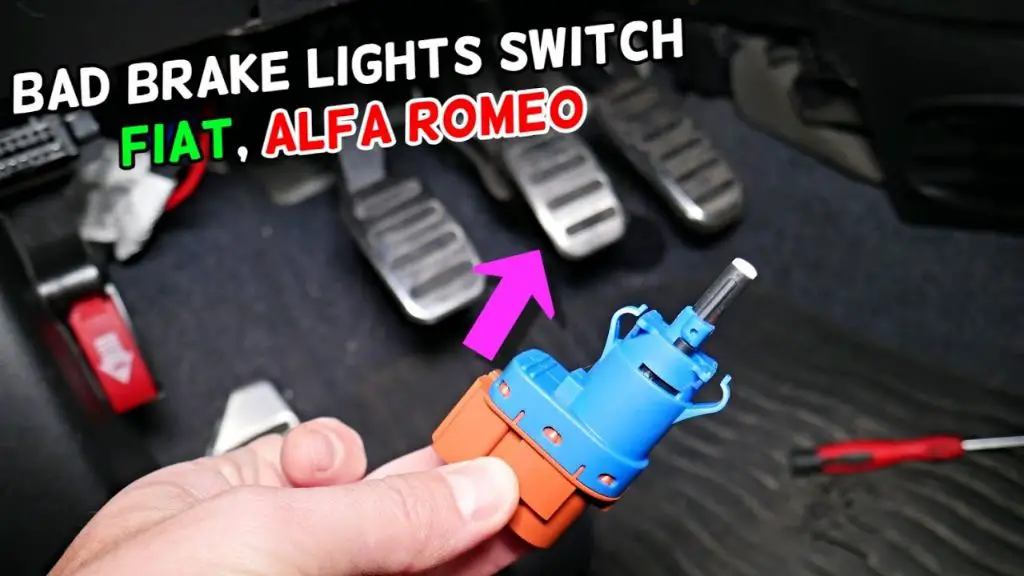Having a faulty brake light switch can be dangerous and lead to accidents. It’s important to know the signs of a bad brake light switch so you can get it fixed right away. Here’s what you need to watch out for:
Page Contents
- 1 Brake Lights Stay On
- 2 Brake Lights Don’t Come On
- 3 Brake Pedal Doesn’t Stop the Car
- 4 ABS Light Comes On
- 5 Brake Pedal Feels Spongy
- 6 Brakes Drag
- 7 How to Diagnose a Faulty Brake Light Switch
- 8 Common Causes of a Bad Brake Light Switch
- 9 How to Replace a Brake Light Switch
- 10 Preventing Brake Light Switch Issues
- 11 The Bottom Line
Brake Lights Stay On
One of the most common signs of a bad brake light switch is that your brake lights stay on even when you’re not braking. This happens because the switch is stuck in the closed position, which sends constant power to the brake lights. Driving with your brake lights on all the time can confuse other drivers since they won’t know when you’re actually braking. It can also drain your battery since the lights are drawing constant power.
Brake Lights Don’t Come On
On the flip side, if your brake lights don’t come on at all when you press the pedal, the brake light switch is likely faulty. The open switch doesn’t allow power to reach the brake lights, leaving you braking blind. Non-working brake lights are very dangerous and mean drivers behind you won’t know you’re stopping.
Brake Pedal Doesn’t Stop the Car
The brake light switch is part of your braking system, so a bad one can also affect your car’s ability to stop. If you press the brake pedal and it sinks to the floor without stopping the car, the brake light switch could be to blame. This symptom means there is likely a loss of pressure in the hydraulic braking system.
ABS Light Comes On
Since the brake light switch provides input to your ABS system, an illuminated ABS warning light can signify a faulty switch. The anti-lock brake system relies on data from the switch to operate properly. So if the info is inaccurate due to a bad switch, it will trigger the ABS light.
Brake Pedal Feels Spongy
A spongy brake pedal can also be caused by a faulty brake light switch. This symptom happens because the switch isn’t properly disengaging the cruise control system. The cruise control thinks it still needs to maintain speed, which interferes with the hydraulic pressure in the brakes.
Brakes Drag
Dragging brakes or brakes that are slow to release may indicate an issue with the brake light switch as well. If the switch gets stuck in the closed position, it can activate the brake lights even when you’re not pressing the pedal. This constant contact can cause the brake pads to drag against the rotors.
How to Diagnose a Faulty Brake Light Switch
If you suspect an issue with your brake light switch, here are a few ways to test it:
- Tap the brake pedal lightly and check if the brake lights come on. If not, the switch is likely bad.
- Have someone observe the brake lights while you press the pedal. Notice if they stay on after the pedal is released.
- Check that the switch clicks when you press and release the pedal. No clicking indicates a problem.
- Use a multimeter to check for continuity between the wires when the pedal is pressed and released.
Common Causes of a Bad Brake Light Switch
What makes a brake light switch go bad? Here are some of the most common causes:
- Wear and tear – Switches can wear out over time from regular pedal pressing.
- Damage – Exposure to liquid, dirt, or physical impact can damage the switch.
- Electrical issues – Electrical shorts, bad grounds, and faulty wires can burn out the switch.
- Incorrect adjustment – The switch may be misadjusted or installed incorrectly.
How to Replace a Brake Light Switch
Replacing a faulty brake light switch is generally a straightforward DIY fix. Here are the steps:
- Locate the brake light switch under the dashboard near the brake pedal. It has two wiring connectors.
- Disconnect the electrical connectors from the switch.
- Unthread or unbolt the switch from the brake pedal bracket.
- Install the new switch in the same position and thread it into place.
- Reconnect the electrical connectors to the replacement switch.
- Test that the brake lights are working properly.
In most vehicles, the entire process takes under 30 minutes and requires basic hand tools. Make sure to get an identical replacement switch made for your specific vehicle make and model.
Preventing Brake Light Switch Issues
You can help avoid problems with your brake light switch by following these tips:
- Inspect switch wires for damage or corrosion regularly.
- Check that the switch is properly adjusted and clicks with pedal movement.
- Make sure the electrical connector is fully seated.
- Address any symptoms immediately to prevent further failure.
- Consider replacing the switch preventatively once it’s several years old.
The Bottom Line
Catching brake light switch issues quickly is critical for safe driving. Watch for warning signs like stuck lights, spongy pedal, and ABS light. Diagnose with electrical tests and pedal checks. Replace the switch yourself in less than an hour. With vigilance and preventative care, you can avoid being stranded with brake failure.
